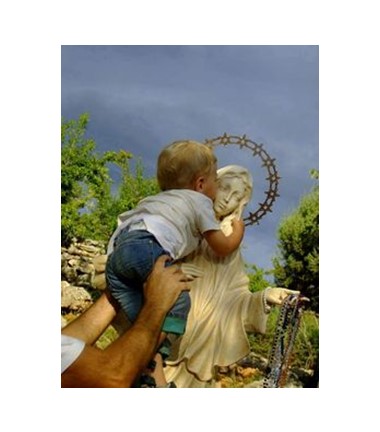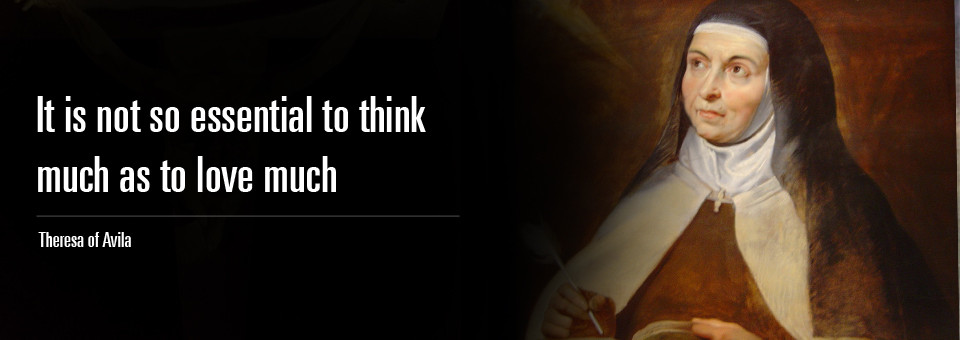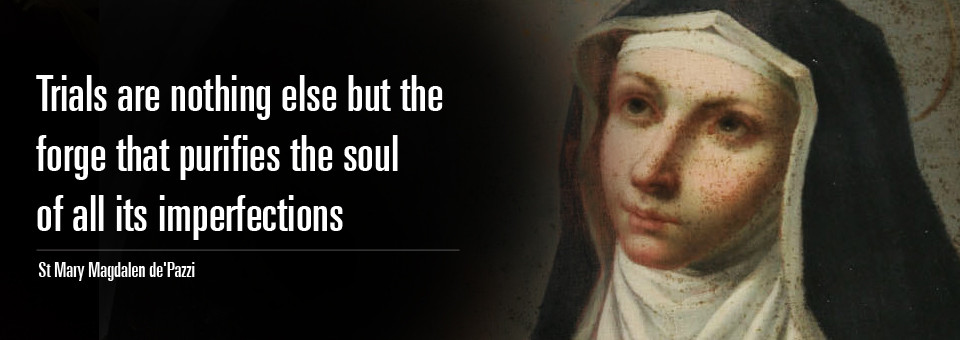
Thursday October 1st is the feast of our beloved Saint Therese. She can give us hope in this moment of coronavirus crisis. Enjoy this article that I found on the net…
SAINTLY EXAMPLES FOR A TIME OF PANDEMIC
By Louise Carroll Keeley
| July-August 2020
Louise Carroll Keeley, Ph.D., retired in 2019 from Assumption University in Worcester, Massachusetts, as Professor of Philosophy and Provost Emerita.
On August 28, 1877, in Alençon, France, Zélie Martin, 45, died from breast cancer, 12 years after noticing the first signs of disease. By the time she sought medical attention, her condition could not be cured, nor did a pilgrimage to Lourdes less than three months before her death result in a physical healing. She left behind a loving husband, Louis, and five daughters: Marie, 17; Pauline, almost 16; Léonie, 14; Céline, 8; and Thérèse, the youngest, age four.
The death of matriarch Zélie was a searing loss for the family, one that led to their relocation in Lisieux to find consolation and support in proximity to Zélie’s closest living relatives. Louis, 54, the newly widowed father of five daughters, sought the companionship and help of Zélie’s brother, Isidore, and sister-in-law, Céline Fournet. (Zélie’s other sister, Élise, Sister Marie-Dosithée, had died of tuberculosis six months before Zélie’s death.)
Louis was an exceptionally kind man, equally fond of and devoted to his daughters, but he was not nearly as accomplished in practical affairs as his deceased wife had been. His temperament was as monastic as hers had been domestically and economically engaged.
But with the help of Zélie’s relatives, Louis raised his daughters in an intimate family community of love and faith. All five daughters entered religious life and made final vows: Pauline, Marie, Thérèse, and Céline in the Carmelite community of Lisieux, and Léonie, after three failed attempts (including a brief stint as a Poor Clare), at the Visitation convent at Caen.
After Thérèse’s death at the age of 24 in 1897, the publication of her unfinished manuscript, Story of a Soul, led to her canonization in 1925 and the worldwide fame that continues today. Less well known, her parents, Zélie and Louis, were beatified by Pope Benedict XVI in 2008 and canonized seven years later by Pope Francis. Theirs was a family of saints.

Many of us who have been quarantining with our own families due to the coronavirus pandemic may be tempted to use other phrases to describe our families. It is easy to assume that what is difficult for us — the real but uncertain prospect of death by COVID-19, for ourselves or the ones we love — would have been easy for the saintly Martins. This is not true.
In a letter to her brother in 1865, Zélie confessed, “I own to you that I am terrified of death.” This was a woman who was not to remain unfamiliar with death. Between 1865 and 1870, she suffered the loss of two infant sons, two daughters, her father, and her father-in-law. No son survived beyond infancy. One daughter, Mélanie-Thérèse, died of starvation at the age of two months when, unbeknownst to Zélie, her wet-nurse proved incapable of providing adequate nutrition; the other daughter, Hélène, her mother’s pride and joy, was five years old when she died unexpectedly. The death of this delightful child was especially hard to bear.
Similarly, Zélie’s death was the defining event of Thérèse’s childhood, and its adverse effects persisted for years. The nine-year period immediately following Zélie’s death — from 1877 to 1886 — was the most difficult of Thérèse’s life, transforming her personality from joyful and vivacious to timid and overly sensitive.
This led to social isolation from other children, serious physical (and neurological) illness at the age of ten, the scourge of scrupulosity, and what some might identify as the conditions for attachment disorder. Interestingly, all her life Thérèse sought and found substitute mothers: she chose her “ideal” sister Pauline as her “second Mother”; her sister Marie was her godmother and stepped in to fulfill Pauline’s teaching role when Pauline entered Carmel; Thérèse was deeply attached to her superiors, Mother Marie de Gonzague and Mother Agnes of Jesus (Pauline); and through a miracle she experienced the smile of Mary, whom she affectionately called “Mama.” The devastation wrought by the death of her mother affected every aspect of Thérèse’s life and being, and yet she emerged a saint. What can we learn from Thérèse and her mother as coronavirus threatens our own lives and the lives of those we love?

Zélie was not afraid to admit that she was afraid. By acknowledging her fear in her correspondence with her beloved brother, she both apprehended and shared the truth of her inner life with honesty and humility. What she did not do is equally important. She did not allow her fear to seep, pathologically, into her household, jeopardizing the welfare of her children by sharing her uneasiness with them.
Nor did Zélie allow any feeling of fear to tyrannize her actions. Quite the opposite: Zelie’s correspondence and the historical record indicate that Thérèse’s mother acted heroically — persisting in her religious devotions, continuing to make the lace that supported the household financially, and tending to the needs of her large family much longer than could have been reasonably expected, given the physical pain she was experiencing. When she was forced to suspend her activities, her pain was already far advanced, and she relocated to a part of the home where she was least likely to disturb her family at night when her pain worsened.
Like any mother, the anxiety of worrying how her children would fare without her guidance exacerbated her distress. In particular, she must have worried about her very difficult middle daughter, Léonie, whose behavior, unlike her sisters’, was volatile, insufficiently virtuous, and not always amenable to instruction. By not allowing her worries to compromise her actions, Zélie witnessed — in both her life and her death — her fidelity to faith and family.

By January 2, 1892, Thérèse’s 19th birthday, influenza had spread rapidly throughout the convent at Lisieux, and many of the 20 or so sisters were ill or dying. Thérèse reports in Story of a Soul that “two sisters and myself were the only ones left on our feet”; thus, the work of nursing the ill and commemorating the dead — to the extent this was still possible — fell largely to her and the two other healthy sisters, although some of the sisters, “who could scarcely drag themselves around” due to illness, helped nurse the more seriously ill. “It’s impossible to imagine the sad state of the community at this time…but in the midst of this abandonment I felt that God was watching over us.”
Unlike her mother more than 25 years earlier, Thérèse mentions
twice that she was not afraid to live in such close quarters
with death, asking herself later, “How I could have done all I did without
experiencing fear” as “death reigned supreme”?
But even Thérèse was not completely immune to fear. When she died five and a half years later from tuberculosis, without the relief of morphine – her superior had forbidden its use despite her physician’s request to administer it — her suffering was terrible.
Her sisters recorded her saying, “I am afraid I have feared death. I am not afraid of what happens after death; that is certain! I don’t regret giving up my life; but I ask myself: what is this mysterious separation of the soul from the body? It is the first time I have experienced this, but I abandoned myself immediately to God.”
Whatever fear she did have seems to have been exacerbated by the severe trial of faith she had been experiencing for 18 months, a doubt regarding the reality of Heaven that tormented her until the day she died. On the advice of her confessor, she chose not to dwell on these dangerous thoughts, but they persisted against her will, causing emotional suffering. This was torture par excellence, perfectly crafted to exploit mercilessly her greatest vulnerability.

Both Zélie and Thérèse experienced the fear of death, but for
different reasons.
Zélie’s fear finds its most poignant expression in a kind of sadness recognizable to all good parents. On multiple occasions, Zélie states frankly that she would prefer to live rather than die, given her ardent maternal desire to see her daughters settled as thriving, holy adults. She is heartbroken at the prospect of leaving them to grow to maturity without the presence, guidance, and steering love of a mother.
In Thérèse’s case, fear erupts inwardly, tormenting its host by interrogating her most sacred beliefs and declaring them false. This fear, when it strikes, is insidious, interior, and cunning.
What advice might Thérèse offer to us today?
First, Thérèse would counsel us to acknowledge our fear but not focus on it. It is better to greet fear with an unsurprised attitude of “So what!” than to allow it to keep our attention fixed upon ourselves. For many of us, turning away from ourselves is not our natural inclination: We are mesmerized by our weaknesses, as if captivated by the eye of the snake. But preoccupation with our own imperfections can be an indulgent form of self-love. And to the extent that we are preoccupied with our own failings, we pay more attention to ourselves and less to God. We prioritize our weaknesses over God’s mercy.
Thérèse, on the other hand, was not preoccupied with herself at all. In a certain way, her imperfections didn’t matter very much. Thérèse understood that God’s love is not earned, that there is no merit in her that could compel God’s love or attention.
As Ida Friederike Görres puts it so succinctly in The Hidden Face: A Study of St. Thérèse of Lisieux (1959), “We can be loved without having deserved it.” Similarly, Thérèse trusted that no imperfection in herself would occasion God to withhold His Love. This is why Thérèse could say with the confidence of a much-loved child that even if she had all possible sins on her conscience, “I would go, my heart broken with sorrow, and throw myself into Jesus’ arms…. There is no one who could frighten me, because I know too well what to believe concerning His Mercy and His Love. I know that this whole multitude of sins would be lost in the twinkling of an eye like a drop of water cast into a burning furnace.”
Second, Thérèse would tell us always to choose the law of love over the law of fear.

“I am far from being on the way of fear,” she writes. “Fear made me recoil; with love not only did I advance, I actually flew.” The love Thérèse had in mind is not rooted in feelings, nor does it consist merely in deeds: “I understood so well that without love all works are nothing, even the most dazzling.” For Thérèse, love is akin to the kind of fearless trust and absolute confidence that young children naturally embody in the arms of their loving parents. Consider the image of a small child, perched on his mother’s hip as she descends a dangerously steep staircase, or tossed playfully by his father who offers implicit assurance that he will catch his son. Oblivious to fear, utterly content, confident in the trustworthiness of his parents, the child never believes himself to be imperiled as long as he is in their arms. Those of us who are parents have had this experience. We know that the child’s trust is palpable, his fear nonexistent, and his gaze one of absolute confidence and love. We know too how time erodes this trust, as children age and begin to perceive real dangers, even as their parents offer verbal and physical reassurances to mitigate those fears.
But Thérèse’s point is that spiritual trust need not erode over time, that it is possible and desirable to entrust ourselves to God in absolute surrender, confidence, and love, and that doing so is what God most seeks from us. In fact, Thérèse tells us bluntly, “I understand that it is only love that makes us acceptable to God.” Or, in the words of one of Thérèse’s own spiritual mentors, St. John of the Cross, “Love is repaid by love alone.”
Third, Thérèse would remind us that this world is not our home. As more and more people ascribe to the materialistic view that conscious life ends with death, and no afterlife awaits, it is increasingly easy to adopt, almost by cultural osmosis, the type of this-worldly attitude that Nietzsche prophesied and promoted. Almost unawares, we cling defiantly to life on earth as if we had not been promised eternal life with God. Although Thérèse was not conversant with the secularist and atheistic ideas of the late 19th century, even she was not spared this doubt: She confessed to “having great interior trials of all kinds, even to the point of asking myself whether heaven really existed.”
Fortunately, “after speaking only a few words” to the priest preaching a community retreat at the convent, “he launched me full sail upon the waves of confidence and love which so strongly attracted me.” Later, when an even more severe form of this doubt returned, she was able to find joy in the way of confidence and trust she had learned and perfected over the years.
St. Thérèse’s way of spiritual childhood as developed in Story of a Soulcan do the same for us. As a prelude to reading her full manuscript, it would be helpful to recall the words of Thomas á Kempis in The Imitation of Christ, words Thérèse quotes in Story of a Soul: “Love never finds impossibilities because it believes everything is possible, everything is permitted.” I think Thérèse would also remind us, with the confidence of one who knows, that when God awakens a desire within the human heart, He does so in order to satisfy it.
©2020 New Oxford Review. All Rights Reserved.

Source : https://www.assumption.us/news/1976-zelie-martin-a-therese-of-lisieux-on-confronting-the-fear-of-death



